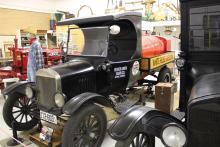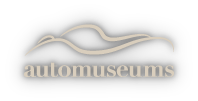Museums in United States
Owls Head Transportation Museum
Home to a world-class operating collection, the Owls Head Transportation Museum (OHTM) features more than 150 antique automobiles, aircraft, motorcycles, bicycles, engines and more. Located in picturesque Midcoast Maine, the Museum offers something for everyone with award-winning exhibits halls, community education programs and a full event season, featuring Wings & Wheels Spectacular and the New England Auto Auction™. Founded in 1974, the Museum is a place where machines of a bygone era are celebrated through conservation, preservation and demonstration.
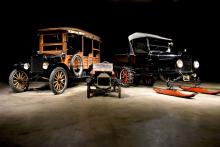
Pacific Northwest Truck Museum
In the Pacific Northwest Truck Museum, you will see some of the great working vehicles that developed the Pacific Northwest. These wonderfully restored antique trucks, parts and memorabilia also show the significant and unique innovations in the development of trucks brought about by the longer distances and rough terrain of this part of the country. We have over 75 trucks by GMC, Freightliner, International, Kenworth, Mack, and Peterbilt, long-gone Autocar, Moreland, Samson, White, and Yellow-Knight, and many other makes. "
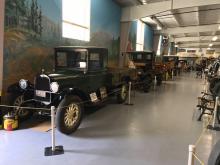
Panhandle-Plains Historical Museum
Where else can you cover 26,000 square miles in a day on foot? From dinosaurs to conquistadors, you'll find it all in Texas' largest history museum. Relive the stories of courage and hardship, victory and defeat over the past 14,000 years. Step in and step back to the Old West in a life-size Pioneer Town, view one of the Southwest's finest art collections, experience the exciting history of the petroleum industry, and more. The transportation collection is proud to include one of the oldest Ford automobiles in existence: a 1903 Ford Model A serial #28.
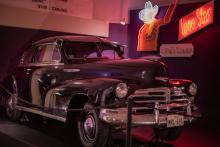
Panoz Museum
Situated within the Panoz HQ there is a company museum: "take a look at our collection of Panoz cars and memorabilia spanning over 25 years of success and innovation in motorsports"
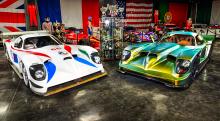
Patee House Museum
St. Joseph is known for the start of the Pony Express and the end of Jesse James, and Patee House played a role in both. Patee House is St. Joseph's only National Historic Landmark. Built in 1858 as a luxury hotel, Patee House served as the Pony Express headquarters from 1860 to 1861. It is one block away from the home of infamous outlaw Jesse James, where he was shot and killed by Bob Ford. After his death, the James family stayed and were interviewed in the hotel. Patee House Museum features two full floors of exhibits.
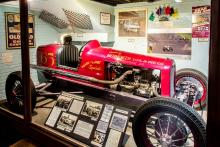
Penrose Heritage Museum
Penrose Heritage Museum showcases the history and heritage of the Pikes Peak region through the personal artifact collection of Colorado Springs’ philanthropists Spencer and Julie Penrose with a special tribute to the history of the Pikes Peak International Hill Climb, started by Spencer Penrose in 1916.
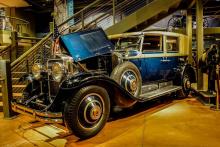
Penske Racing Museum
The Penske Racing Museum showcases an amazing collection of cars, trophies and racing memorabilia chronicling the career of one of the most successful dynasties in all of sports. Penske Racing has over 50 years of racing experience and over 400 major race wins highlighted by 17 Indianapolis 500-mile race victories. On display in the museum are cars detailing the diversity of Penske Racing including a replica of the 1963 Pontiac Catalina which Roger Penske drove to victory in the 1963 Riverside 250.

Petersen Automotive Museum
The Petersen Automotive Museum is dedicated to the exploration and presentation of the automobile and its impact on American life and culture using Los Angeles as the prime example. Encompassing more than 300,000 square feet, its exhibits and lifelike dioramas feature more than 150 rare and classic cars, trucks and motorcycles.
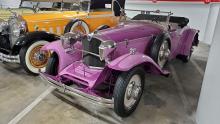
Petroleum Museum
Founded in 1975, the Museum tells the story of petroleum and the rugged lives of men and women who sought a better life. Located in the heart of the Permian Basin, The Petroleum Museum offers over 32,000 square feet of interactive education and entertainment for adventure of all ages. The addition of the Transportation Wing in 2004, which houses the Chaparral Gallery, enables the Museum to enhance the story of the interdependence of petroleum and surface transportation by telling the pioneering history of the Chaparral Road Racers.
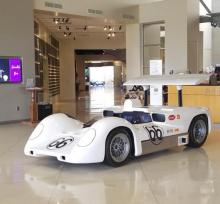
Phillips County Museum
Phillips County Museum is proud to house the documents, pictures and artifacts of the people, businesses and organizations who helped build our communities that have remained firmly rooted on the Colorado Prairie.
